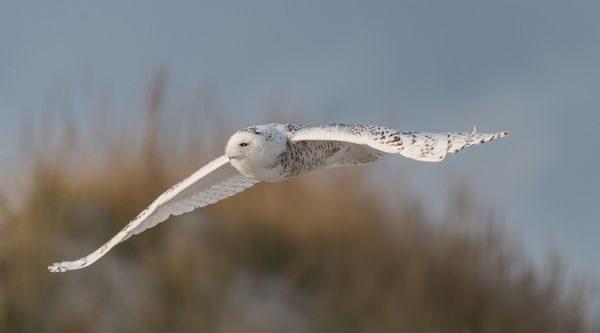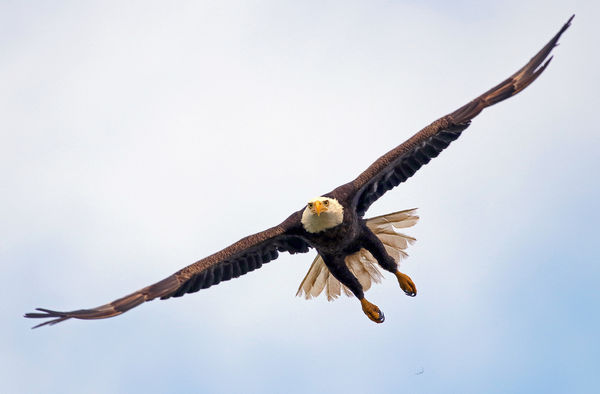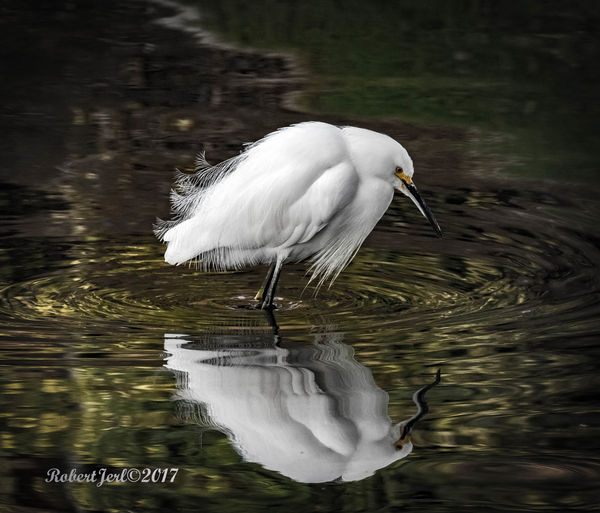Photographing Birds
Jul 25, 2019 09:55:00 #
Blurryeyed wrote:
im sure you are probably correct, but he asked.You are looking at a $5000 investment, not sure that he OP wants to go there, he has yet to mention a budget.
Jul 25, 2019 10:42:40 #
RRS
Loc: Not sure
ronschulze wrote:
I would like input on good lens for a Canon for capturing flying birds.
Look up Regis here and look at what he has done with the 400mm DO and now with a 300mm f/2.8. As others have said, the 400mm f/5.6 is a very sharp lens but many complain it's not good enough only because it does not have IS. I think the 100-400 II or the 400mm f5.6 would be the way to go starting out.
Jul 25, 2019 10:49:26 #
Nikon 500mm PF, $3 grand. No doubt about it. Easily hand-holdable.
Jul 25, 2019 11:53:22 #
Jul 25, 2019 14:58:23 #
I use the Tamron G2 150-600. I chose it over the Sigma Sport which is heavier and more expensive. I believe it is superior to the Sigma C.
Jul 25, 2019 15:29:33 #
amfoto1
Loc: San Jose, Calif. USA
Welcome to UHH Ronschulze...
You haven't responded to any of the questions....
1. What camera are you using?
2. What's your budget for the lens?
3. What lens(es) do you have now?
Our recommendations will differ quite a bit, depending upon your answers to those questions.
But, for use on an APS-C camera (such as Canon 7D-series, 80D/70D/60D etc., or any of the "Rebel" series models)....
1. Best all around zoom is the Canon 100-400mm "II" IS USM. Truly excellent image quality. It also works very well with Canon 1.4X II or III teleconverters (7D Mark II and 80D are able to autofocus this combo... earlier models are not.) There is almost no loss of image quality or effect on focus speed or image stabilization effectiveness when used with a quality 1.4X. Cost for lens is about $1800 right now. Lens weighs about 3.5 lb. The 100-400mm II is also very close focusing. It can do close to 1/3 life size magnification (most other telephoto zooms like this can do 1/5 or, at best, 1/4 life size).
2. There was a previous version of the 100-400mm IS USM that can widely be found for under $1000 used. It's a "push/pull" zoom which some people really like for things like BIF (and other fast shooting situations). It also has very good image quality, although not quite as good as the II. This lens uses a more primitive form of IS (needs to be turned off if using the lens locked down on a tripod, when there's no movement to correct). It sometimes can still be found new, too... for about $1200. Can be used with a 1.4X teleconverter, but there's more loss of image quality than with the "II" version of the lens. Weighs about 3 lb. The original push/pull zoom 100-400mm is not nearly as close focusing as the "II".
3. Third party Sigma and Tamron 100-400mm are available, both selling for $800 or less new. These are pretty decent lenses on their own, not as sharp as the Canon. I don't know how they work with teleconverters.... would expect them to take a pretty heavy hit in image quality. Between these two, the Sigma might have a very slight edge in image quality but the Tamron can optionally be fitted with a tripod mounting ring (sold separately, $129), which is an accessory I'd definitely want with a 400mm lens! The Sigma has no tripod mounting ring or option of fitting one. These lenses each weight a little under 3 lb.
4. Canon EF 400mm f/5.6L USM is a very sharp, fast focusing lens that's popular with birders. It's not as convenient and versatile as a zoom. This lens also lacks image stabilization, so will require you to keep to relatively fast shutter speeds hand holding it. On an APS-C camera, 1/500 is probably the minimum shutter speed. Of course, with BIF faster shutter speeds are probably going to be needed anyway. This lens can be combined with a quality 1.4X teleconverter for pretty good results and will be able to autofocus on later camera models such as 7D Mark II and 80D. The EF 400mm f/5.6L sells for about $1200. This lens weighs right around 3 lb.
5. Canon EF 300mm f/4L IS USM is another very good lens and works quite well with a quality 1.4X teleconverter (and is able to autofocus on all current and recent Canon DSLRs). This makes for a "420mm f/5.6" lens/teleconverter combo WITH image stabilization. Like the push/pull 100-400, it uses "old school" style image stabilization that needs to be turned off while locked down on a tripod or in other situations where there's no movement for IS to correct. The EF 300mm f/4L IS USM sells for about $1350 and weighs approx. 2.5 lb. A quality 1.4X, the Canon "III" that can currently be bought new sells for upwards of $400... the earlier "II" version of it also works very well with this lens and can typically be bought used for $250 or less.
6. On a crop camera, for BIF a 300mm lens is often sufficient... So the EF 70-300mm IS USM, EF 70-300mm IS USM "II", EF 70-300mm IS USM "L" are all possibilities, too. Especially the first two are lighter and more compact. The "L" has the best image quality of the three, more robust build and better sealing for weather & dust resistance, and it's the only one of them that can optionally be used with a tripod mounting ring (sold separately). All three have fast USM autofocus drive and image stabilization. The "II" has the latest versions of both those features. The now discontinued first version 70-300mm IS USM can still be found new for under $400, the current "II" sells for around $500 and the "L" costs around $1350 and weighs a little over 2 lb.
IMO lenses like the 150-600mm that are mentioned in some previous responses are simply "too long" for BIF. These lenses are great for some other things, but rather big and heavy (4.5 lb.) to hand hold for very long while shooting BIF. My favorite lens for the purpose is the EF 300mm f/4... but I also use the 100-400mm II quite a bit. The zoom is one stop slower (f/5.6 from around 300 to 400mm), so I particular use the prime lens in lower light conditions (I also use 300mm f/2.8, but it's too big and heavy for BIF).
I don't know why some previous responses are recommending Nikon lenses, which will not fit or work on your Canon DSLR, which you specified in the original question.
You haven't responded to any of the questions....
1. What camera are you using?
2. What's your budget for the lens?
3. What lens(es) do you have now?
Our recommendations will differ quite a bit, depending upon your answers to those questions.
But, for use on an APS-C camera (such as Canon 7D-series, 80D/70D/60D etc., or any of the "Rebel" series models)....
1. Best all around zoom is the Canon 100-400mm "II" IS USM. Truly excellent image quality. It also works very well with Canon 1.4X II or III teleconverters (7D Mark II and 80D are able to autofocus this combo... earlier models are not.) There is almost no loss of image quality or effect on focus speed or image stabilization effectiveness when used with a quality 1.4X. Cost for lens is about $1800 right now. Lens weighs about 3.5 lb. The 100-400mm II is also very close focusing. It can do close to 1/3 life size magnification (most other telephoto zooms like this can do 1/5 or, at best, 1/4 life size).
2. There was a previous version of the 100-400mm IS USM that can widely be found for under $1000 used. It's a "push/pull" zoom which some people really like for things like BIF (and other fast shooting situations). It also has very good image quality, although not quite as good as the II. This lens uses a more primitive form of IS (needs to be turned off if using the lens locked down on a tripod, when there's no movement to correct). It sometimes can still be found new, too... for about $1200. Can be used with a 1.4X teleconverter, but there's more loss of image quality than with the "II" version of the lens. Weighs about 3 lb. The original push/pull zoom 100-400mm is not nearly as close focusing as the "II".
3. Third party Sigma and Tamron 100-400mm are available, both selling for $800 or less new. These are pretty decent lenses on their own, not as sharp as the Canon. I don't know how they work with teleconverters.... would expect them to take a pretty heavy hit in image quality. Between these two, the Sigma might have a very slight edge in image quality but the Tamron can optionally be fitted with a tripod mounting ring (sold separately, $129), which is an accessory I'd definitely want with a 400mm lens! The Sigma has no tripod mounting ring or option of fitting one. These lenses each weight a little under 3 lb.
4. Canon EF 400mm f/5.6L USM is a very sharp, fast focusing lens that's popular with birders. It's not as convenient and versatile as a zoom. This lens also lacks image stabilization, so will require you to keep to relatively fast shutter speeds hand holding it. On an APS-C camera, 1/500 is probably the minimum shutter speed. Of course, with BIF faster shutter speeds are probably going to be needed anyway. This lens can be combined with a quality 1.4X teleconverter for pretty good results and will be able to autofocus on later camera models such as 7D Mark II and 80D. The EF 400mm f/5.6L sells for about $1200. This lens weighs right around 3 lb.
5. Canon EF 300mm f/4L IS USM is another very good lens and works quite well with a quality 1.4X teleconverter (and is able to autofocus on all current and recent Canon DSLRs). This makes for a "420mm f/5.6" lens/teleconverter combo WITH image stabilization. Like the push/pull 100-400, it uses "old school" style image stabilization that needs to be turned off while locked down on a tripod or in other situations where there's no movement for IS to correct. The EF 300mm f/4L IS USM sells for about $1350 and weighs approx. 2.5 lb. A quality 1.4X, the Canon "III" that can currently be bought new sells for upwards of $400... the earlier "II" version of it also works very well with this lens and can typically be bought used for $250 or less.
6. On a crop camera, for BIF a 300mm lens is often sufficient... So the EF 70-300mm IS USM, EF 70-300mm IS USM "II", EF 70-300mm IS USM "L" are all possibilities, too. Especially the first two are lighter and more compact. The "L" has the best image quality of the three, more robust build and better sealing for weather & dust resistance, and it's the only one of them that can optionally be used with a tripod mounting ring (sold separately). All three have fast USM autofocus drive and image stabilization. The "II" has the latest versions of both those features. The now discontinued first version 70-300mm IS USM can still be found new for under $400, the current "II" sells for around $500 and the "L" costs around $1350 and weighs a little over 2 lb.
IMO lenses like the 150-600mm that are mentioned in some previous responses are simply "too long" for BIF. These lenses are great for some other things, but rather big and heavy (4.5 lb.) to hand hold for very long while shooting BIF. My favorite lens for the purpose is the EF 300mm f/4... but I also use the 100-400mm II quite a bit. The zoom is one stop slower (f/5.6 from around 300 to 400mm), so I particular use the prime lens in lower light conditions (I also use 300mm f/2.8, but it's too big and heavy for BIF).
I don't know why some previous responses are recommending Nikon lenses, which will not fit or work on your Canon DSLR, which you specified in the original question.
Jul 25, 2019 15:35:55 #
Fotoartist wrote:
Nikon 500mm PF, $3 grand. No doubt about it. Easily hand-holdable.
On a Canon?
Jul 25, 2019 15:38:49 #
Gene51 wrote:
On a Canon?
Well, there is a converter that will allow you manual focus shooting wide open.
It is my understanding that you can't get your hands on that lens anyway, back ordered at both B&H and Adorama, have a friend that ordered one several months back and still has not gotten it.
Jul 25, 2019 15:58:15 #
SX2002 wrote:
Sigma 150-600mm C, a brilliant, sharp lens, the ex... (show quote)


 For that first image.
For that first image.Jul 25, 2019 16:03:05 #
PHRubin wrote:
I use the Tamron G2 150-600. I chose it over the Sigma Sport which is heavier and more expensive. I believe it is superior to the Sigma C.
Several ratings articles I have read put the Tamron G2 and Sigma C as tied for best IQ, the G2 and Sigma S as tied for build and weather proofing, the Tamron G1 is rated as being the best bang for the buck if you are on a budget. I have owned and used the G1 and G2. I have gotten outstanding results with both. The G2 focuses faster, is weather sealed and a bit better IQ.
Jul 25, 2019 16:08:04 #
amfoto1 wrote:
Welcome to UHH Ronschulze... br br You haven't re... (show quote)
Everyone's experience is different. I routinely hike all day, sometimes on sand to shoot all sorts of birds and wildlife using a 6.5 lb Sigma Sport 150-600 and a D810. My friend who sometimes accompanies me, a petite (5' tall) 65 yr old woman, borrowed my Sigma and one of my D800s to shoot snowy owls - and together we hiked 5 miles on sand - she with my Sigma and me with my 600mmF4, tripod, D810 - these are her results, shooting the "heavy" lens hand held. This was her first outing with a full frame camera and a long lens. A week later she bought my extra D800, and 2 weeks after that she bought a new Tamron 150-600 G2 - and she loves both. There is no such thing as a lens that is "too long" for birds and birds in flight, especially when you are using a zoom - they are absolutely intended for and marketed to those who want a flexible setup for birds in flight - where you can still hand hold it, zooming as required.
However, your mileage may vary.
Jul 25, 2019 17:31:46 #
Jul 25, 2019 18:04:09 #
amfoto1 wrote:
Welcome to UHH Ronschulze... br br You haven't re... (show quote)
As Gene says, everybody's experiences are different, I did not at all care for the 7DMkII for BIF and in fact I much preferred the 5DIV but neither camera is perfect, one created far too much noise and the other did not have the pixel density to do significant cropping, I am hoping the replacement for the 7DII will finally retire my 5DSr which gives better image quality than the 7DII even when heavily cropped but the HS shutter is really slow and the buffer clogs quickly with 50mp images.
Jul 25, 2019 19:49:37 #
speters wrote:
I really enjoy the 400/5.6 for this, it has no weight at all, so one can shoot it hand held all day long and don't even know its there (since that seems so important to many folks)!

 - but it does have some idiosyncrasies in use - 1/2 the cost of the zoom ....FAST focus !
- but it does have some idiosyncrasies in use - 1/2 the cost of the zoom ....FAST focus !Takes the 1.4X well.
Many people prefer the speed of zoom and getting on target FAST with the Canon 100-400 version I - including ME.
.
Jul 25, 2019 20:46:39 #
Blurryeyed wrote:
As Gene says, everybody's experiences are different, I did not at all care for the 7DMkII for BIF and in fact I much preferred the 5DIV but neither camera is perfect, one created far too much noise and the other did not have the pixel density to do significant cropping, I am hoping the replacement for the 7DII will finally retire my 5DSr which gives better image quality than the 7DII even when heavily cropped but the HS shutter is really slow and the buffer clogs quickly with 50mp images.
You realize the 7DII actually has a tiny advantage in pixel density over the 5Ds R don't you?
With good light the 7DII has little noise.
Where is the excess noise in this shot? As you can see this Egret was in shade on a sunny day.
If you want to reply, then register here. Registration is free and your account is created instantly, so you can post right away.











